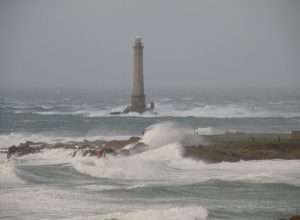
To estimate and forecast tidal stream energy is one of the key points of the Marine Renewable Energy (MRE) researches to guarantee the profitability of farms and the quality of electricity service to users. Currently, manufacturers have errors of 10% on the computation of hydrodynamic currents which lead to errors of 30% on the tidal stream energy. Calculations do not take into account interactions between sea states and tidal currents due to the lack of available data to validate numerical models. Raz Blanchard have an average depth of 40 meters while wave length is often larger than 100 meters. So, wave-current interactions could significantly modify the estimate of tidal stream energy. Within this context, we will deploy 3 types of radar system (HF, VHF and X-band) in addition to in-situ measurements (2 Sentinel V50, 2 ADCP, 1 ADV, 5 drifting buoys, 1 Stereo-Video system). We will have a unique dataset to validate and improve numerical models and also a relevant database. We will improve the turbulence modeling, the parameterization of the wind stress and of the bottom stress in order to minimize modelling errors. Efforts will also focuse on the parameterization of the dissipation of energy due to wave breaking in the presence of strong currents. Hydrodynamic scenarios deduced from the outputs of numerical models will be used as a basis for the estimate of the tidal stream energy. A new methodology for converting hydraulic energy to electrical energy will be developed. This methodology will be independent of the tidal converter type and will aims to estimate the tidal stream energy.